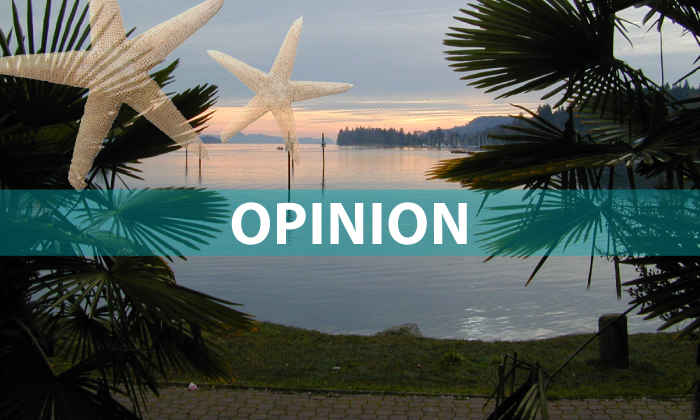By MARIANNE HOBBES
Wow! Eric Booth sure dazzled us with lots of figures and formulae in his “WHU series: water talks” Viewpoint column last week. It would be very instructive to know the sources for his data.
Mr. Booth’s statement that “there is a massive available water supply on the island” is countered by a 2019 report by the CBC which stated “for years drought and freshwater shortages have plagued Salt Spring Island.”
Whether you believe in climate change or not, simply referring to rainfall/snow melt information readily available on the CHEK News website shows that this area (southern Vancouver Island and the Gulf Islands) has definitely suffered from droughts that start earlier and last longer, without strong winter rains or snowfall.
This impacts lakes, rivers and aquifers as they can be depleted. The National Geographic website states that all of the above require rain and snow melt to “recharge” and these “can be depleted if the amount of water drawn exceeds the source’s ability to recharge.”
An aquifer is a source of groundwater but water obtained from it is not necessarily potable and supply may not be reliable or long-lasting. Not all groundwater from an aquifer is safe. For example, there is a history of arsenic in well water on the island. Currently, as Health Canada fine-tunes its guidelines about potable water, manganese levels challenge the Cedar Lane Water District, with a need for remediation measures.
Mr. Booth seems to think that Lake Maxwell appears to be in good shape. Perhaps this has less to do with the water cycle than the good stewardship of North Salt Spring Waterworks management over the decades.
We are about to enter an El Nino weather event. The projections for all of B.C. strongly indicate that the province will be in for very hot, dry weather. CRD and NSSWD will be introducing stringent measures to reduce water usage in the districts they manage, to ensure sufficient water is available for basic needs. (While focusing on household water needs, Mr. Booth fails to mention water consumption used in agriculture, livestock maintenance, business and services such as hospitals, schools and police/fire departments. He also omits the impact of tourism on the island’s water draw during the driest months.)
We seem to be at a crossroads: if we love the island and hope to see its natural areas preserved for the future, we must think very carefully. Mr. Booth appears to be advocating greatly increased development when our resources — and particularly water — will not support it.
The writer is a Cedar Lane resident.


My response to Ms. Hobbes’ points is posted at – https://islandstrust.wordpress.com/2023/04/26/2318/